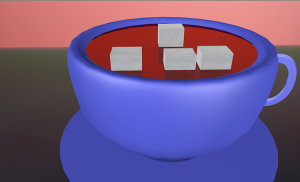Tags
baked goods, carbohydrates, catsup, cinnamon, condiments, cotton candy, Dan White, diet, DNA, fairy floss, glycation, Health, hyperactivity, ketchup, memory, nanotechnology, obecalp, RNA, rocket fuel, sugar, treacle, tuberculosis, Twinkie Defense, World Health Organization
 The average American consumes an astounding 2-3 pounds of sugar each week,. Actually, that’s not all that surprising. Sugar is loaded by the cube and spoonful into tea and coffee. It’s hidden in cereals, breads, condiments, nut butters, tomato products, sauces, andmicrowavable meals. And of course it’s in candy, baked goods, pancakes, energy drinks, soft drinks, and some alcoholic beverages.
The average American consumes an astounding 2-3 pounds of sugar each week,. Actually, that’s not all that surprising. Sugar is loaded by the cube and spoonful into tea and coffee. It’s hidden in cereals, breads, condiments, nut butters, tomato products, sauces, andmicrowavable meals. And of course it’s in candy, baked goods, pancakes, energy drinks, soft drinks, and some alcoholic beverages.
The World Health Organization wants Americans to reduce their sugar intake to no more than 6 teaspoons a day. That’s about a tenth of what we currently eat and drink.
The benefits could be enormous—in dental health, in skin health, in kidney health (reducing diabetes) and in heart health (excess sugar is correlated with terrible cholesterol readings).
Here, in celebration of the fact that we’ve finally figured out that sugar is killing us, are some facts about the food we hate to love.
- We like it, but do we need it? Well, maybe we did once. It may even be a fundamental building block of life. Sugar has been discovered in interstellar clouds and on meteorites that are made from carbon. The particular sugar discovered, when it reacts with other sugars, can form ribose (also a sugar), and that’s the starting point for RNA and DNA.
- For sugar we are, and to (or through) sugar we shall (or might) return (to space). Sugar propellant is the most popular rocket fuel used by amateurs. Also, sugar can be converted into electricity, gasoline, and ethanol.
- Sugar’s survival function: Is there an evolutionary logic behind kids’ preference for sweets over, say, broccoli? Could be. Bitter-tasting plants are often poisonous.
- Did we evolve to prefer our sugar with cinnamon? Might have. It moderates some of sugar’s harmful physiological effects.
- Treacle is any syrup made during the refining of sugar cane. In Victorian England, treacle was often laced with opium—which may be what made Lewis Carroll’s treacle-drinking dormouse so sleepy.
- Sugar may give you wrinkles through a process called “glycation” in which excess blood sugar binds to collagen in the skin, making it less elastic. If this is the case, cutting back on high-sugar foods as well as simple carbohydrates may allow your skin to retain its flexibility.
- Mary Poppins was right. Sugar helps the medicine go down (or at least into the cells, where it’s needed). There’s a lot of research being done on sugar-based nanotechnology. With medicine encapsulated in microscopic sugar cubes, the cells readily absorb drugs they otherwise would not.
- Tuberculosis also uses the nanotechnology trick. The most common form of the bacterium uses a sugar coat (a sugar called mannose) to get welcomed into the cells of the lungs.
- Sugar affects behavior and memory, but not only in the ways many mothers of young children think. Yes, high sugar diets increase activity levels in both hyperactive and normal children. And, yes, hyperactive children also become more aggressive. But sugar also triggers the release of endorphins (a naturally-occuring, morphine like molecule), helping stressed children relax.
- Should kids eat all their Halloween candy at once? Some dentists say it would be better for their teeth if they did.
- The Twinkie Defense. The term, now meaning any improbable defense, originated with Dan White’s trial for the murder of San Francisco Mayor George Moscone and Supervisor Harvey Milk. The word “Twinkie” was not actually part of testimony, and the defense never actually claimed that Dan White’s sanity was ruined by a sugar rush. What they said was that White’s consumption of highly sugared foods was a symptom of his depression, and the depression was what motivated the murders.
- How do you spell “Placebo?” Backwards. “Obecalp” is being marketed as a side effect-free cure-all for mild complaints
- During World War II, sugar was the first food item rationed and the last food item on which rationing was lifted.
- Cotton candy, which is 100% sugar, was introduced at the St. Louis World’s Fair in 1904 as “Fairy Floss.”
- Spikes in blood sugar can diminish memory. Since the body’s ability to regulate blood sugar is diminished with age, this cause-effect relationship may at least partly explain normal age-related memory loss.
- Oh, so THAT’s what they mean by “sugar rush.” In Tanzania and other African nations, European companies are trying to grab up land to convert tropical jungle to sugar plantations for the production of biofuels (fossil fuels being SO 20th century).
